When a Fire Starts to Burn. The Relation Between an (Inter)nationally Oriented Incinerator Capacity and the Port Cities’ Local Circular Ambitions
Abstract
1. Introduction
2. The Circular Economy as Public Value
2.1. The Public Value Concept
2.2. The Lack of Strategic Management can Constrain Sustainable Development
3. Operational Framework
4. Results
4.1. The EU Waste Reduction Policies
4.2. Flanders-Ghent
4.3. The Netherlands/Amsterdam
5. Discussion
The Legacy of an Internationally Oriented New Public Management Hinders a Balanced Local-Oriented CE Triangle
6. Conclusions
Author Contributions
Funding
Acknowledgments
Conflicts of Interest
References
- Harrison, J. Seeing like a business: Rethinking the role of business in regional development, planning and governance. Territ. Politics Gov. 2020, 1–21. [Google Scholar] [CrossRef]
- Agnew, J. The territorial trap: The geographical assumptions of international relations theory. Rev. Int. Politics Econ. 1994, 1, 53–80. [Google Scholar] [CrossRef]
- Bauwens, T.; Hekkert, M.; Kirchherr, J. Circular futures: What will they look like? Ecol. Econ. 2020, 175, 106703. [Google Scholar] [CrossRef]
- Geissdoerfer, M.; Savaget, P.; Bocken, N.M.; Hultink, E.J. The circular economy—A new sustainability paradigm? J. Clean. Prod. 2017, 143, 757–768. [Google Scholar] [CrossRef]
- Ghisellini, P.; Cialani, C.; Ulgiati, S. A review on circular economy: The expected transition to a balanced interplay of environmental and economic systems. J. Clean. Prod. 2016, 114, 11–32. [Google Scholar] [CrossRef]
- Su, B.; Heshmati, A.; Geng, Y.; Yu, X. A review of the circular economy in China: Moving from rhetoric to implementation. J. Clean. Prod. 2013, 42, 215–227. [Google Scholar] [CrossRef]
- UN. Circular Economy: The New Normal? United Nations: New York, NY, USA, 2018. [Google Scholar]
- OECD. Business Models for the Circular Economy. Opportunities and Challenges from a Policy Perspective; Organisation for Economic Co-operation and Development: Paris, France, 2019. [Google Scholar]
- COM. A New Circular Economy Action Plan. For a Cleaner and More Competitive Europe; European Commission: Brussels, Belgium, 2020. [Google Scholar]
- COM. Closing the Loop—An EU Action Plan for the Circular Economy; European Commission: Brussels, Belgium, 2015. [Google Scholar]
- Vlaamse Overheid. Vlaanderen Circulair. Een Stuwende Kracht Naar een Circulaire Economie in Vlaanderen; Vlaamse Overheid: Brussels, Belgium, 2017. [Google Scholar]
- Dutch Government. Nederland Circulair in 2050; Dutch Government: The Hague, The Netherlands, 2016.
- Hobson, K. Closing the loop or squaring the circle? Locating generative spaces for the circular economy. Prog. Hum. Geogr. 2015, 40, 88–104. [Google Scholar] [CrossRef]
- Carlson, A.; Burtraw, D. Lessons from the Clean Air Act: Building Durability and Adaptability into US Climate and Energy Policy; Cambridge University Press: Cambridge, UK, 2019. [Google Scholar]
- PBL. Outline of the Circular Economy; PBL Netherlands Environmental Assessment Agency: The Hague, The Netherlands, 2019. [Google Scholar]
- Reike, D.; Vermeulen, W.J.; Witjes, S. The circular economy: New or Refurbished as CE 3.0?—Exploring controversies in the conceptualization of the circular economy through a focus on history and resource value retention options. Resour. Conserv. Recycl. 2018, 135, 246–264. [Google Scholar] [CrossRef]
- Zink, T.; Geyer, R. Circular economy rebound. J. Ind. Ecol. 2017, 21, 593–602. [Google Scholar] [CrossRef]
- de Wit, M.; Hoogzaad, J.; Von Daniels, C. The Circularity Gap Report 2020; Ruparo: Amsterdam, The Netherlands, 2020. [Google Scholar]
- Sunley, P. Relational economic geography: A partial understanding or a new paradigm? Econ. Geogr. 2009, 84, 1–26. [Google Scholar] [CrossRef]
- McCombs, M.E.; Shaw, D.L.; Weaver, D.H. New directions in agenda-setting theory and research. Mass Commun. Soc. 2014, 17, 781–802. [Google Scholar] [CrossRef]
- Valenzuela, F.; Bohm, S. Against wasted politics: A critique of the circular economy. Ephemer. Theory Politics Organ. 2017, 17, 37. [Google Scholar]
- Van den Berghe, K.; Vos, M. Circular area design or circular area functioning? A discourse-institutional analysis of circular area developments in Amsterdam and Utrecht, The Netherlands. Sustainability 2019, 11, 4875. [Google Scholar] [CrossRef]
- Sayer, A. Method in Social Science: A Realist Approach; Routledge: London, UK, 2010. [Google Scholar]
- Van den Berghe, K.; Jacobs, W.; Boelens, L. The relational geometry of the port-city interface: Case studies of Amsterdam, the Netherlands, and Ghent, Belgium. J. Transp. Geogr. 2018, 70, 55–63. [Google Scholar] [CrossRef]
- Korhonen, J.; Nuur, C.; Feldmann, A.; Birkie, S.E. Circular economy as an essentially contested concept. J. Clean. Prod. 2018, 175, 544–552. [Google Scholar] [CrossRef]
- North, P. Eco-localisation as a progressive response to peak oil and climate change—A sympathetic critique. Geoforum 2010, 41, 585–594. [Google Scholar] [CrossRef]
- Van den Berghe, K.; Dabrowski, M.; Ersoy, A.; Wandl, A.; van Bueren, E. The circular economy as re-emerging industry and the importance of the role of space [working paper]. Delft Univ. Technol. 2020. [Google Scholar] [CrossRef]
- Swyngedouw, E. Globalisation or ‘glocalisation’? Networks, territories and rescaling. Hist. Econ. Soc. Bull. 2004, 17, 25–48. [Google Scholar] [CrossRef]
- Burger, M.J.; Stavropoulos, S.; Ramkumar, S.; Dufourmont, J.; Van Oort, F. The heterogeneous skill-base of circular economy employment. Res. Policy 2019, 48, 248–261. [Google Scholar] [CrossRef]
- Storper, M. The Regional World: Territorial Development in a Global Economy; Guilford Press: New York, NY, USA, 1997. [Google Scholar]
- Moore, M. Creating Public Value: Strategic Management in Government; Harvard University Press: Cambridge, MA, USA, 1995. [Google Scholar]
- Hendriks, F.; Tops, P. Local public management reforms in the Netherlands: Fads, fashions and winds of change. Public Adm. 2003, 81, 301–323. [Google Scholar] [CrossRef]
- Moore, M.H. Recognizing Public Value; Harvard University Press: Cambridge, MA, USA, 2013. [Google Scholar]
- Schumpeter, J.A. Capitalism, Socialism and Democracy; Routledge: New York, NY, USA, 2003. [Google Scholar]
- Rittel, H.W.J.; Webber, M.M. Dilemmas in a general theory of planning. Policy Sci. 1973, 4, 155–169. [Google Scholar] [CrossRef]
- Beck, U. Risk Society: Towards a New Modernity; SAGE Publications: London, UK, 1992. [Google Scholar]
- Wade, W. Scenario Planning: A Field Guide to the Future; Wiley: Hoboken, NJ, USA, 2012. [Google Scholar]
- Hoetjes, P.J. Mapping the Market: A Portfolio Approach for Informed Deliberation of Urban Development Strategies. Ph.D. Thesis, University of Amsterdam, Amsterdam, The Netherlands, 2010. [Google Scholar]
- Amer, M.; Daim, T.U.; Jetter, A. A review of scenario planning. Futures 2013, 46, 23–40. [Google Scholar] [CrossRef]
- Boons, F.; Spekkink, W. Verinnerlijking van milieuverantwoordelijkheid in de Nederlandse chemische industrie. Over de complexiteit van meervoudige processen; Wetenschappelijke Raad voor het Regeringsbeleid: The Hague, The Netherlands, 2015. [Google Scholar]
- Salomone, R.; Cecchin, A.; Deutz, P.; Raggi, A.; Cutaia, L. Industrial Symbiosis for the Circular Economy. Operational Experiences, Best Practices and Obstacles to a Collaborative Business Approach; Springer: Berlin/Heidelberg, Germany, 2020. [Google Scholar]
- Hoppe, T.; Van Bueren, E.; Solorio, I.; Jörgens, H. From frontrunner to laggard: The Netherlands and Europeanization in the cases of RES-E and biofuel stimulation. In A Guide to EU Renewable Energy Policy. Comparing Europeanization and Domestic Policy Change in EU Member States; Solorio, I., Jörgens, H., Eds.; Edward Elgar Publishing: Cheltenham, UK, 2017. [Google Scholar]
- Bentsen, N. Carbon debt and payback time—Lost in the forest? Renew. Sustain. Energy Rev. 2017, 73, 1211–1217. [Google Scholar] [CrossRef]
- EEA. Resource Efficiency and Circular Economy in Europe—Even More from Less. An Overview of Policies, Approaches and Targets of Belgium in 2018; European Environment Agency: København, Denmark, 2019. [Google Scholar]
- EEA. Resource Efficiency and Circular Economy in Europe—Even More from Less. An Overview of Policies, Approaches and Targets of The Netherlands in 2018; European Environment Agency: København, Denmark, 2019. [Google Scholar]
- European Union. Directive 94/62/EC on packaging and packaging waste. In 94/62/EC; European Union: Brussels, Belgium, 1994. [Google Scholar]
- European Union. Directive 1999/31/EC on the landfill of waste. In 1999/31/EC; European Union: Brussels, Belgium, 1999. [Google Scholar]
- European Union. Directive 2000/76/EC on the incineration of waste. In 2000/76/EC; European Union: Brussels, Belgium, 2000. [Google Scholar]
- European Union. Directive 2008/98/EC on waste and repealing certain Directives. In 2008/98/EC; European Union: Brussels, Belgium, 2008. [Google Scholar]
- Malinauskaite, J.; Jouhara, H.; Czajczynska, D.; Stanchev, P.; Katsou, E.; Rostkowski, P.; Thorne, R.; Colón, J.; Ponsá, S.; Al-Mansour, F.; et al. Municipal solid waste management and waste-to-energy in the context of a circular economy and energy recycling in Europe. Energy 2017, 141, 2013–2044. [Google Scholar] [CrossRef]
- Scarlat, N.; Fahl, F.; Dallemand, J.-F. Status and opportunities for energy recovery from municipal solid waste in Europe. Waste Biomass-Valorization 2018, 10, 2425–2444. [Google Scholar] [CrossRef]
- European Union. Directive 2018/851 amending Directive 2008/98/EC on waste. In 2018/851; European Union: Brussels, Belgium, 2018. [Google Scholar]
- COM. Communication on the European Green Deal; COM: Brussels, Belgium, 2019. [Google Scholar]
- OVAM. 30 jaar OVAM—De Openbare Vlaamse Afvalstoffenmaatschappij in Historisch Perspectief; Academia Press: Gent, Belgium, 2011. [Google Scholar]
- Drift. Staat van Transitie: Dynamiek in Mobiliteit, Klimaatadaptatie en Circulaire Economie; Drift: Rotterdam, The Netherlands, 2019. [Google Scholar]
- European Union. Directive 75/442/EEC on waste. In 75/442/EEC; European Union: Brussels, Belgium, 1975. [Google Scholar]
- Vlaamse Overheid. Afvalstoffendecreet; Vlaamse Overheid: Brussels, Belgium, 1981. [Google Scholar]
- OVAM. Huishoudelijk afval en Gelijkaardig Bedrijfsafval 2018; OVAM: Mechelen, Belgium, 2019. [Google Scholar]
- OVAM. Uitvoeringsplan Huishoudelijk Afval en Gelijkaardig Bedrijfsafval; OVAM: Mechelen, Belgium, 2019. [Google Scholar]
- COM. Basel Convention on the control of transboundary movements of hazardous wastes and their disposal. In 93/98/EEC; Council, E., Ed.; European Commission: Brussels, Belgium, 1993. [Google Scholar]
- OVAM. Bedrijfsafvalstoffen Productiejaar 2004–2016; OVAM: Mechelen, Belgium, 2018. [Google Scholar]
- OVAM. Tarieven en Capaciteiten Voor Storten en Verbranden. Actualisatie tot 2017; OVAM: Mechelen, Belgium, 2018. [Google Scholar]
- NSP. Duurzaamheidsambitie 2030—Duurzaamheid werkt verder; North Sea Port: Ghent, Belgium, 2016. [Google Scholar]
- Stad Gent. Lokaal en sociaal. Naar een Gentse Circulaire Economie; Stad Gent: Ghent, Belgium, 2018. [Google Scholar]
- Stad Gent. Samen Circulair. Potentieel voor economie en werkgelegenheid in Gent; Stad Gent: Ghent, Belgium, 2018. [Google Scholar]
- NSP. Onderzoek Clean Undergroudn Sustainable Transport (CUST); North Sea Port: Ghent, Belgium, 2019. [Google Scholar]
- Loorbach, D. Transition Management. New Mode of Governance for Sustainable Development; Erasmus University Rotterdam: Rotterdam, The Netherlands, 2007. [Google Scholar]
- Meadows, D.H.; Meadows, D.L.; Randers, J.; Behrens, W.W. The Limits to Growth. A Report for the Club of Rome’s Project on the Predicament of Mankind; Universe Books: New York, NY, USA, 1972. [Google Scholar]
- CBS. Nauwelijks meer afval, beter gescheiden; Centraal bureau voor de statistiek: CBS: The Hague, The Netherlands, 2019. [Google Scholar]
- RWS. Afvalmonitor; Rijkswaterstaat: Utrecht, The Netherlands, 2020.
- CE Delft. Verbranden in Nederland of stroten in Groot-Brittannie? Milieukundige analyse van de verwerking van brits huishoudelijk afval in Nederland; CE Delft: Delft, The Netherlands, 2012. [Google Scholar]
- Gemeente Amsterdam. Amsterdam Circulair 2020–2025 Strategie; Gemeente Amsterdam: Amsterdam, The Netherlands, 2020. [Google Scholar]
- Gemeente Amsterdam. Amsterdam Circulair. Een visie en routekaart voor de stad en regio; Gemeente Amsterdam: Amsterdam, The Netherlands, 2015. [Google Scholar]
- Amsterdam Port Authority. Jaarverslag 2015; Amsterdam Port Authority: Amsterdam, The Netherlands, 2016. [Google Scholar]
- Van den Berghe, K. Planning the Port City. A Contribution to and Application of the Relational Approach, Based on Five Case Studies in Amsterdam (The Netherlands) and Ghent (Belgium); Ghent University: Ghent, Belgium, 2018. [Google Scholar]
- Wiegmans, B.; Louw, E. Changing port-city relations at Amsterdam: A new phase at the interface? J. Transp. Geogr. 2011, 19, 575–583. [Google Scholar] [CrossRef]
- Hoppe, T.; Van Bueren, E. Guest editorial: Governing the challenges of climate change and energy transition in cities. Energy Sustain. Soc. 2015, 5. [Google Scholar] [CrossRef]
- European Union. Directive 2001/77/EC on the promotion of electricity produced from renewable energy sources in the internal electricity market. In 2001/77/EC; European Union: Brussels, Belgium, 2001. [Google Scholar]
- Boffey, D. Amsterdam to embrace ‘doughnut’ model to mend post-coronavirus economy. The Guardian, 8 April 2020. [Google Scholar]
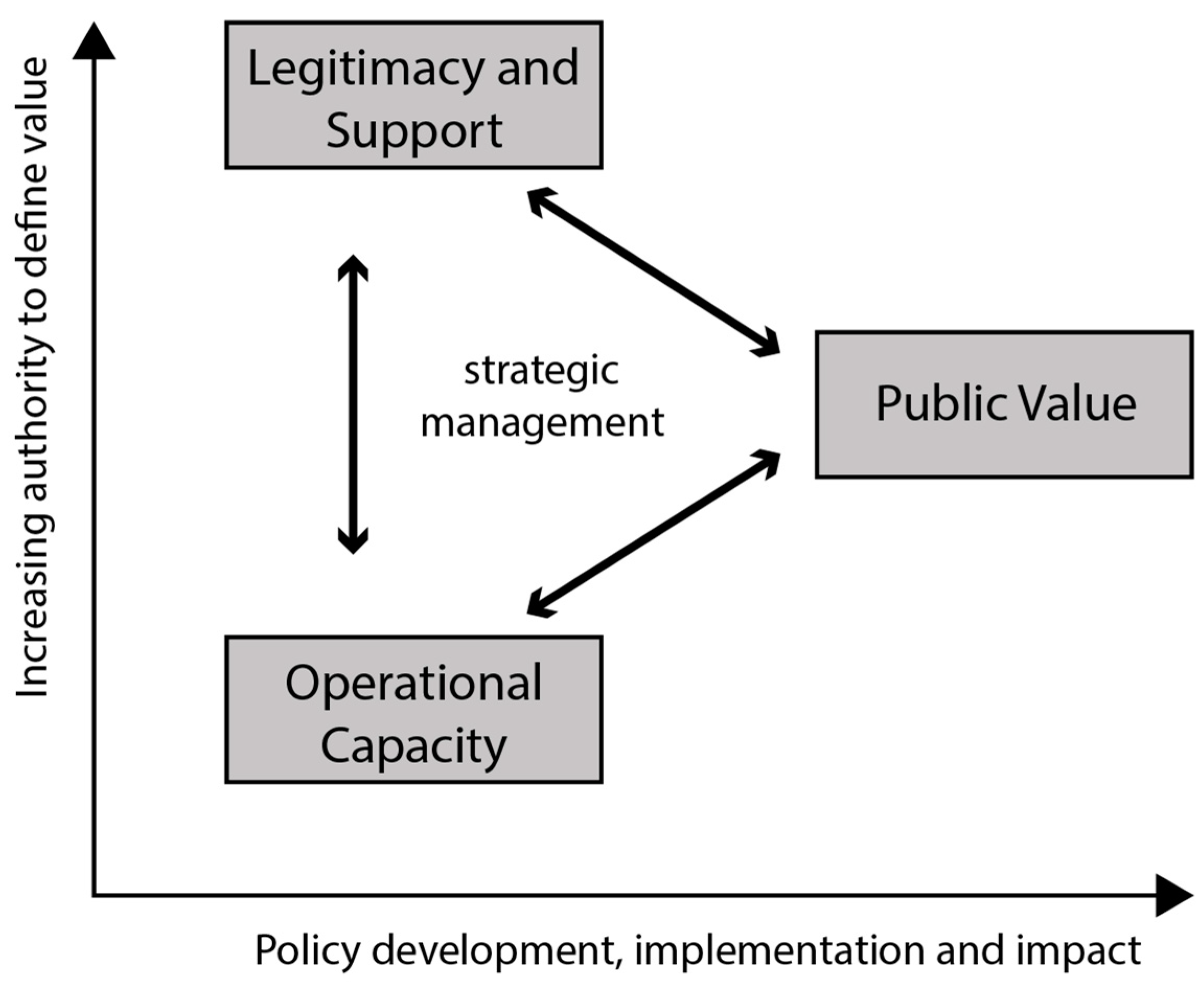
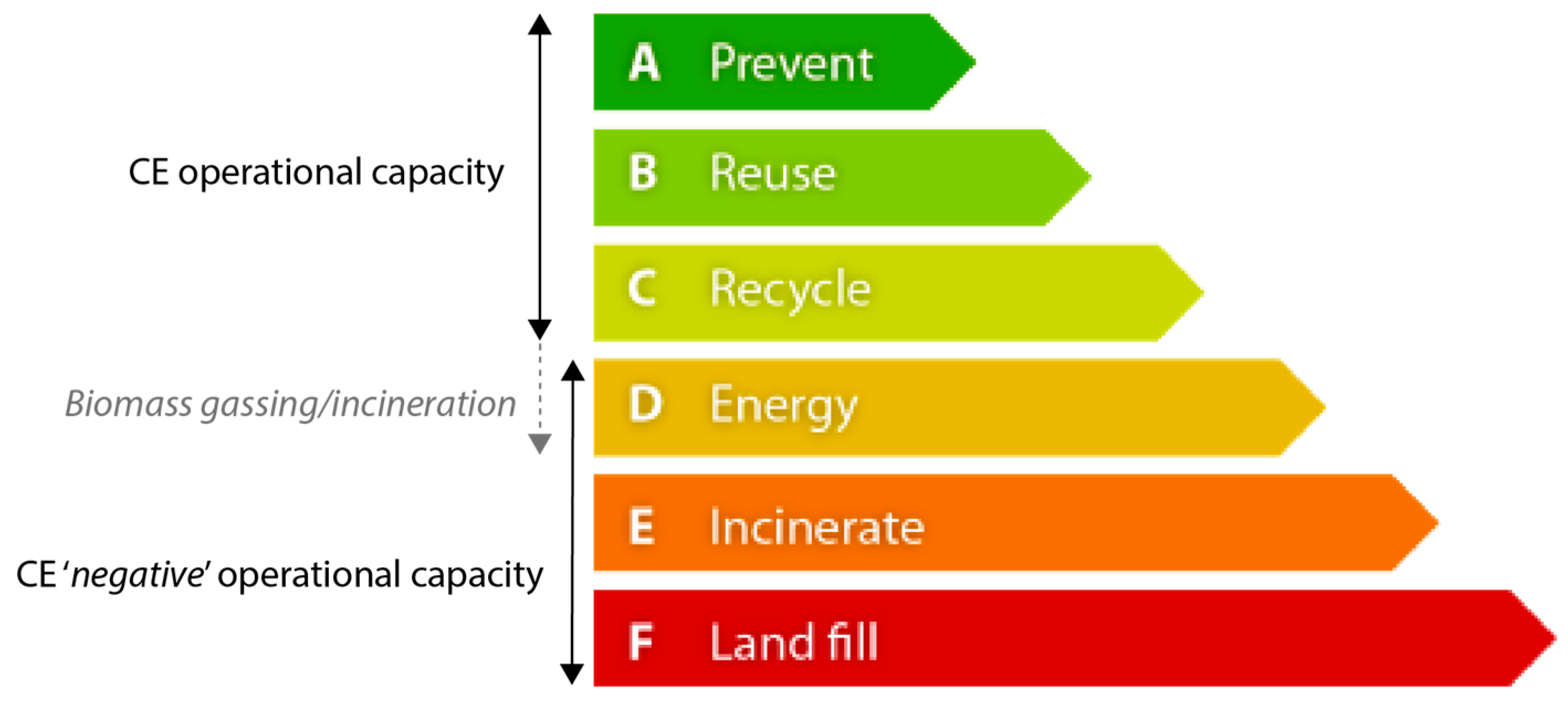
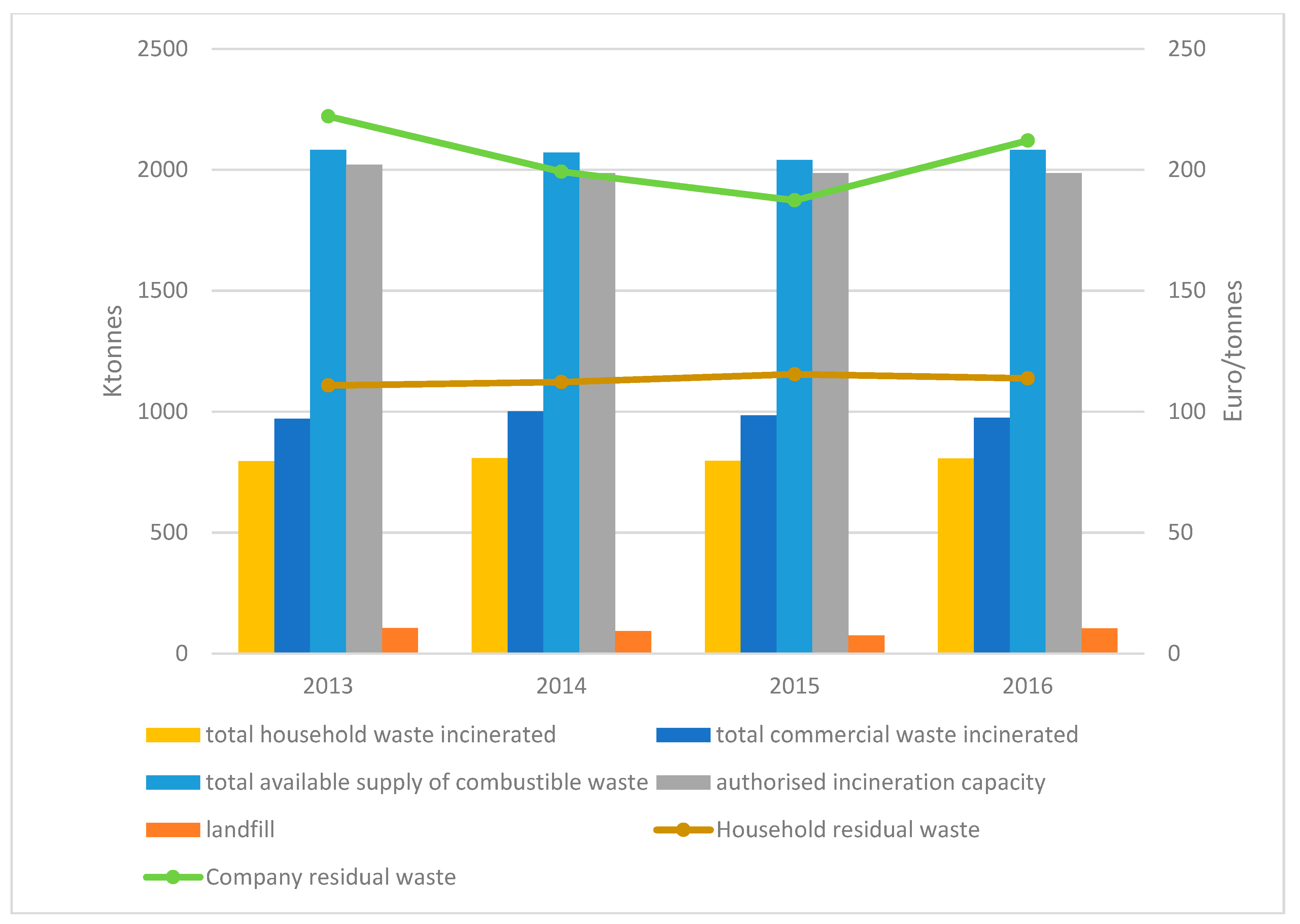
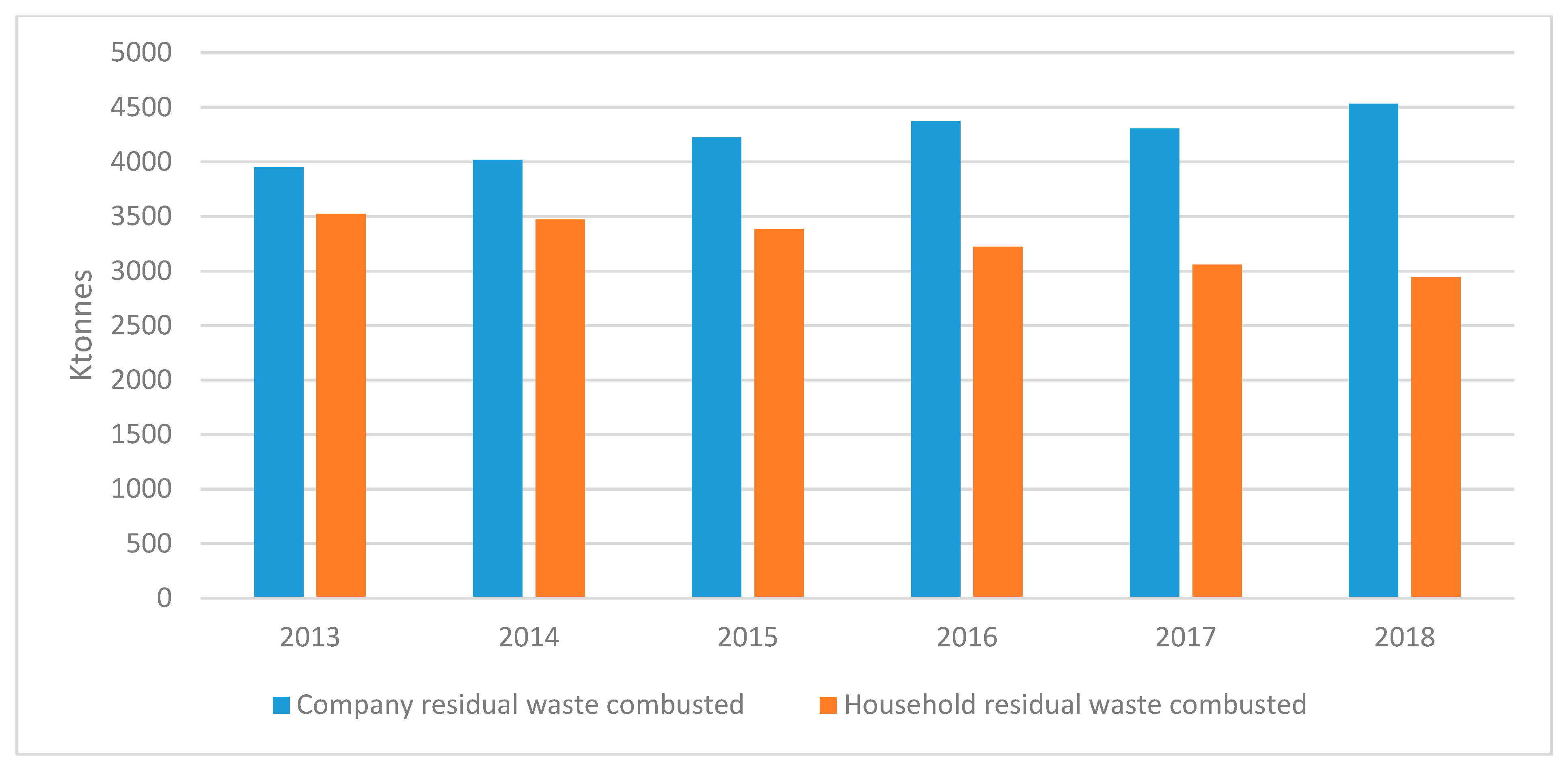
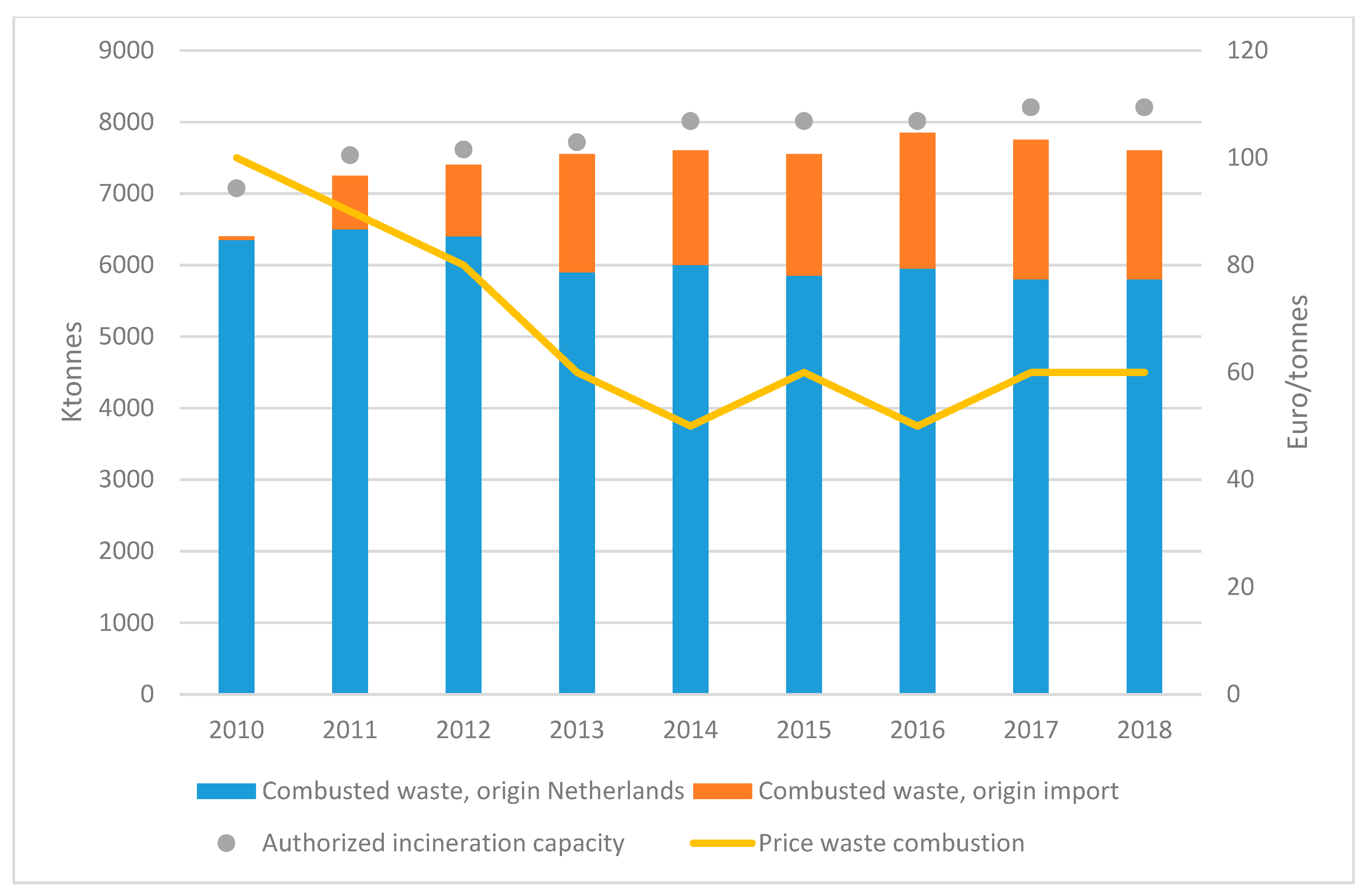
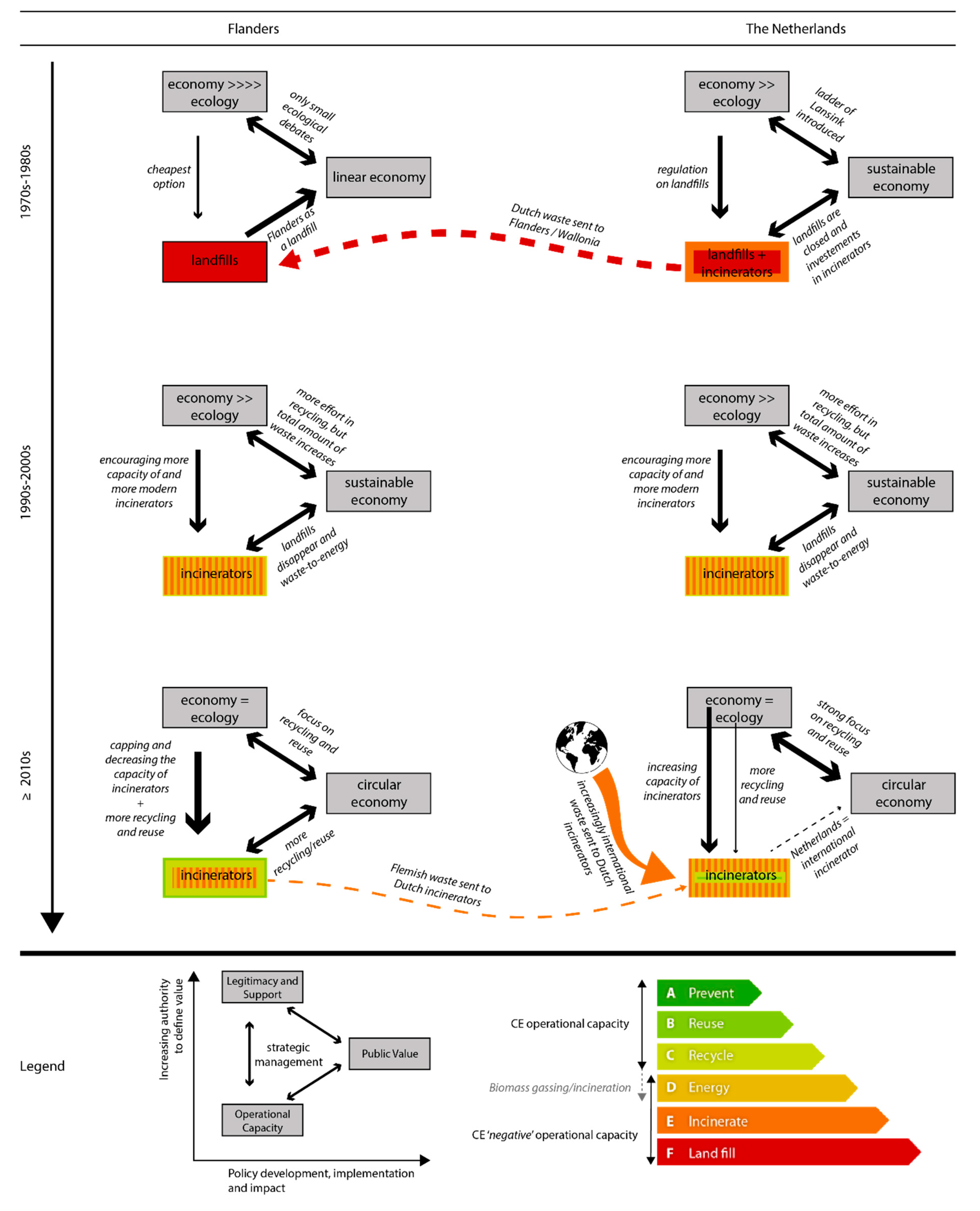
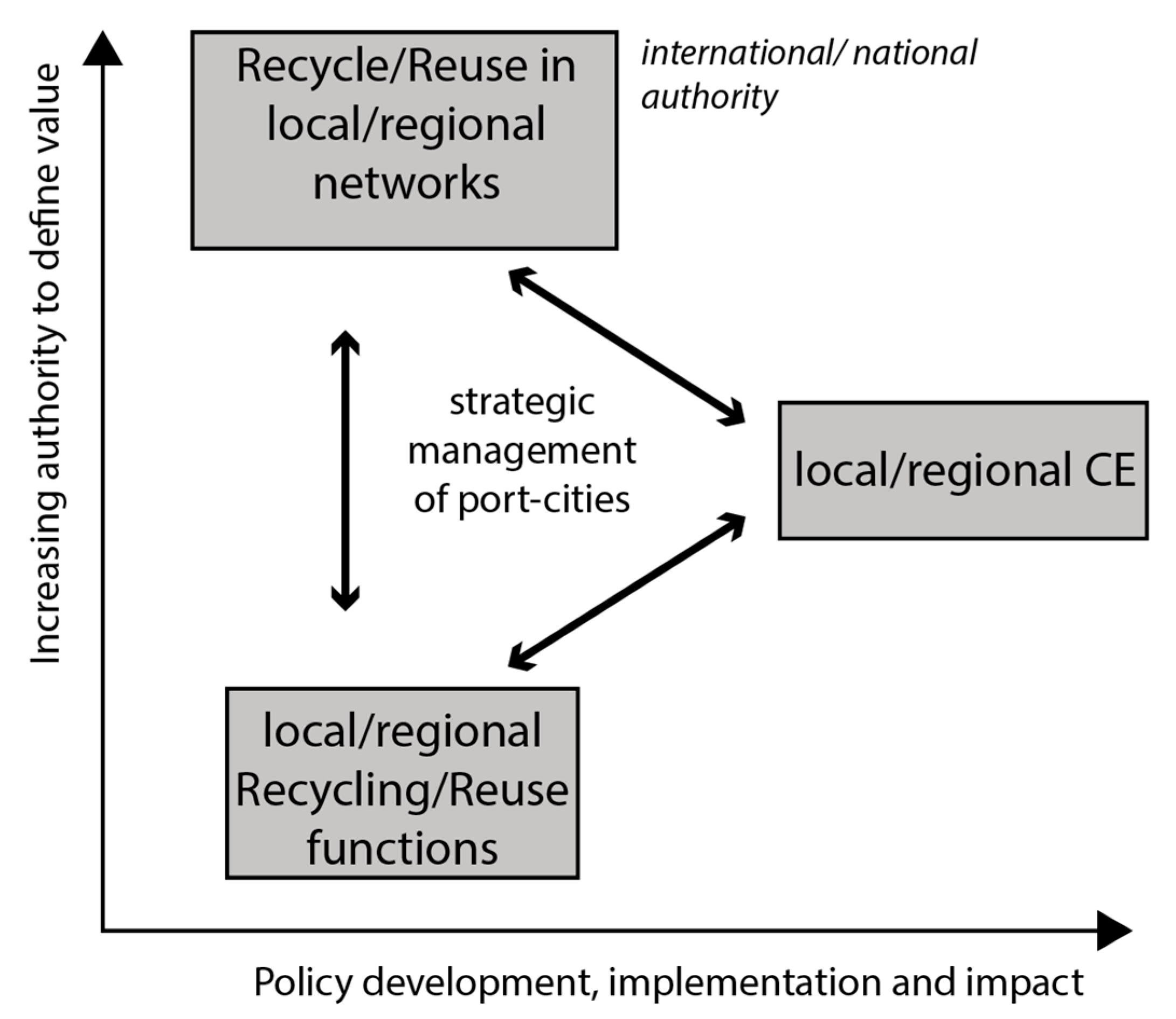
© 2020 by the authors. Licensee MDPI, Basel, Switzerland. This article is an open access article distributed under the terms and conditions of the Creative Commons Attribution (CC BY) license (http://creativecommons.org/licenses/by/4.0/).
Share and Cite
Van den Berghe, K.; Bucci Ancapi, F.; van Bueren, E. When a Fire Starts to Burn. The Relation Between an (Inter)nationally Oriented Incinerator Capacity and the Port Cities’ Local Circular Ambitions. Sustainability 2020, 12, 4889. https://doi.org/10.3390/su12124889
Van den Berghe K, Bucci Ancapi F, van Bueren E. When a Fire Starts to Burn. The Relation Between an (Inter)nationally Oriented Incinerator Capacity and the Port Cities’ Local Circular Ambitions. Sustainability. 2020; 12(12):4889. https://doi.org/10.3390/su12124889
Chicago/Turabian StyleVan den Berghe, Karel, Felipe Bucci Ancapi, and Ellen van Bueren. 2020. "When a Fire Starts to Burn. The Relation Between an (Inter)nationally Oriented Incinerator Capacity and the Port Cities’ Local Circular Ambitions" Sustainability 12, no. 12: 4889. https://doi.org/10.3390/su12124889
APA StyleVan den Berghe, K., Bucci Ancapi, F., & van Bueren, E. (2020). When a Fire Starts to Burn. The Relation Between an (Inter)nationally Oriented Incinerator Capacity and the Port Cities’ Local Circular Ambitions. Sustainability, 12(12), 4889. https://doi.org/10.3390/su12124889




